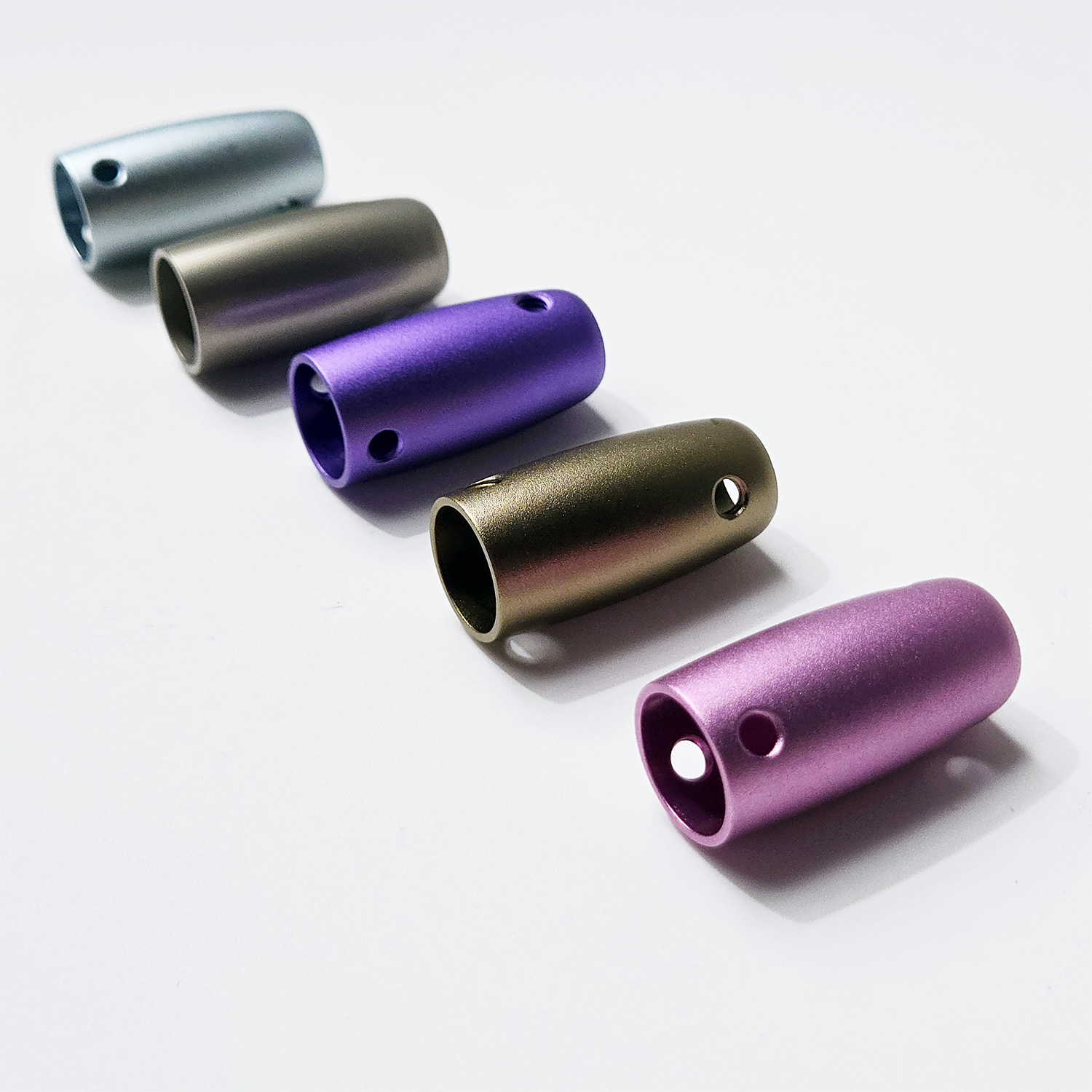What to Consider When Choosing High-Quality CNC Components for Industrial Use
Material Selection: Ensuring Strength, Durability, and Compatibility for CNC Components

Key Mechanical Properties: Strength, Hardness, and Wear Resistance
How long CNC components last really comes down to what kind of materials they're made from and their mechanical characteristics. When we talk about tensile strength, that basically means how well something holds together when force is applied. Hardness matters too because it stops surfaces from getting damaged or changed shape. And then there's wear resistance which becomes super important for things that rub against each other constantly like gears or bearings. Many manufacturers turn to industrial quality alloys that have been specially treated with heat processes. These treatments actually make components last around 40% longer in situations where stress levels are consistently high throughout operation.
Common Materials in Industrial CNC Machining (Aluminum, Steel, Titanium, Plastics)
The aluminum alloy 6061-T6 gets a lot of attention because it packs serious strength into a light package and stands up pretty well against rust. When things get really harsh, stainless steels like 304 and 316 come into play since they can handle tough conditions without breaking down. Titanium takes center stage in places where temperature extremes matter most, which explains why it shows up so much in planes and medical implants thanks to how friendly it is to living tissue. For those needing something different altogether, engineering plastics have their own niche too. Take PEEK or UHMW polyethylene for instance these materials don't conduct electricity and slide around easily, so they're great choices when designing parts that need to avoid sparking or sticking together during operation.
Matching Material to Operational Stress and Load Requirements
Different applications demand distinct material behaviors. Hydraulic valve blocks require fatigue-resistant alloys, whereas semiconductor fixtures may prioritize dimensional stability. For cyclic loading, fatigue strength is paramount; for impact-prone tooling, toughness is key. A material compatibility guide emphasizes that mismatched selections can reduce operational efficiency by 25% in heavy machinery.
Industry Standards and Certified Material Grades (e.g., ASTM, ISO)
Compliance with standards like ASTM E8 for tensile testing and ISO 5832 for implant-grade metals ensures performance consistency and traceability. Certified grades such as 7075 aluminum in aerospace or 17-4PH stainless steel in marine settings help mitigate risks in regulated sectors including automotive and energy.
Precision, Tolerances, and Dimensional Accuracy in CNC Machined Parts
Why Tight Tolerances Matter in Industrial Applications
Getting down to tight tolerances around ±0.0001 inch or smaller matters a lot in fields like aerospace engineering and medical device production. We're talking about situations where tiny measurement differences at the microscopic level can actually cause complete system failures. Take jet engine turbine blades for instance they need just the right shape to work properly through all those high speed rotations. And don't get me started on surgical tools which must have absolutely smooth surfaces so they won't irritate tissue during procedures. When manufacturers stick to ISO 2768-f specifications, studies show something pretty impressive happens too assembly mistakes drop off dramatically about 68 percent fewer problems when compared against parts made with more relaxed tolerance requirements.
Standard vs. High-Precision Tolerance Ranges and Their Impact
Standard tolerances (±0.005") suffice for general applications like enclosures or brackets. However, gears, hydraulic valves, and optical mounts require high-precision ranges (±0.0002"—±0.001"). Reducing tolerance from ±0.010" to ±0.002" typically increases production costs by 30—50%, due to longer machining times and enhanced inspection protocols.
Metrology and Quality Control: Measuring Consistency in Production
Coordinate Measuring Machines (CMMs) and laser scanners achieve micron-level accuracy, verifying compliance with ASME Y14.5 specifications. In high-volume production, statistical process control (SPC) monitors variation in real time. Top manufacturers maintain CpK values ≥1.67, a benchmark associated with 99.7% defect-free output in certified facilities.
Surface Finish and Functional Coatings for Enhanced Performance of CNC Components
The way surfaces are finished and coated makes a big difference in how well CNC parts work, how long they last, and what they look like overall. Getting the right finish cuts down on friction between moving pieces, slows down wear and tear over time, and meets those important visual standards when products face consumers directly. Take aerospace applications for example aluminum parts there typically get anodized to fight off corrosion problems. On the other hand, many automotive manufacturers go with electroless nickel plating for their steel components because it provides consistent protection across different surfaces. These coating choices aren't just about looks they actually impact performance and longevity in real world conditions.
Role of Surface Finish in Friction, Fatigue, and Aesthetic Requirements
When surfaces are rough, they create more friction which leads to heat buildup over time. This extra heat speeds up component wear and wastes energy that could be put to better use elsewhere. For parts that spin fast or move constantly, like bearings and gears, smooth or polished surfaces make all the difference in how well they perform day after day. The tiny bumps and scratches on a surface actually become little weak spots where stress builds up. Under repeated loading conditions, these micro flaws can cut into the lifespan of materials by around 30-35%. Beyond just function, surface treatments matter for appearance too. Brushed aluminum gives equipment a professional look while powder coating comes in various colors that help manufacturers stand out visually when their machines are on display at trade shows or installed in customer facilities.
Common Finishing Processes: Anodizing, Plating, Passivation, and Painting
- Anodizing: Forms a durable oxide layer on aluminum, increasing hardness by up to 60% without altering dimensions
- Hard Chrome Plating: Enhances wear resistance for hydraulic rods and press tools
- Passivation: Removes free iron from stainless steel to prevent rust, critical for medical and food-processing components
- Epoxy Painting: Protects outdoor equipment from UV exposure and moisture
Selecting Finishes Based on Environmental Exposure and Wear Conditions
Zinc-nickel plating works wonders in marine settings where saltwater corrosion is a constant threat. Meanwhile, many chemical processing plants rely on PTFE coatings because they hold up against harsh acids that would eat through other materials. When it comes to heavy duty stuff like mining equipment that gets battered daily, thermal sprayed tungsten carbide coatings make all the difference. These coatings typically last anywhere from double to triple what regular surfaces manage before needing replacement. Most professionals in the field look for coatings certified under ISO 12944 or passing ASTM B117 tests since these standards have become pretty much the gold standard for proving how well protective coatings actually perform over time.
Environmental Resilience and Regulatory Compliance for Industrial CNC Parts
Industrial CNC components must perform reliably in harsh conditions while adhering to global regulatory frameworks. Balancing environmental resilience with compliance ensures long-term functionality and minimizes legal or operational risks.
Performance Under Extreme Conditions: Temperature, Corrosion, and Vibration
Components in aerospace and energy sectors face temperatures above 500°C, corrosive agents, and persistent vibration. Leading manufacturers combine heat-resistant alloys like Inconel with protective ceramic coatings to combat thermal degradation. In marine applications, passivated stainless steel shows three times greater corrosion resistance than untreated variants in salt spray testing.
Compliance with Global Standards (ISO 9001, RoHS, REACH)
Facilities certified under ISO 9001 report defect rate reductions of 18—34%. Regulatory directives such as RoHS and REACH mandate full documentation of material composition, which is vital for electronics and medical device suppliers. Non-compliant components risk fines exceeding €50,000 under EU law and rejection from regulated supply chains.
Quality Assurance Protocols in Certified Manufacturing Facilities
Manufacturers who are certified typically have strict quality control measures in place. These include things like CMM inspections and running tests through spectrochemical analysis equipment. When it comes to tracking components, batch traceability is pretty much standard nowadays. Most parts can be traced all the way back to where they came from as raw materials. This kind of tracking is actually required by about 92 percent of contracts in the defense and aerospace sectors. Third party auditors come in once a year to check if companies are following the rules. But here's something interesting: out of all machining suppliers, only around 41% manage to keep their ISO 9001 certification without any breaks for more than five years straight.
Supplier Capabilities and Scalability in CNC Component Manufacturing
Evaluating Technical Expertise: CAD/CAM, DFM, and Prototyping Speed
For suppliers working in this field, knowing how to work with CAD/CAM software is pretty much essential if they want to get the most out of part designs and machining paths. The better ones actually incorporate DFM concepts right from the start when making prototypes, which can slash material waste somewhere around 30% while still keeping everything structurally sound. With modern multi axis CNC machines now available, top tier manufacturers can produce working prototypes in just three days or so, something that really speeds up the whole design testing process for their clients.
Assessing Supplier Reliability, Communication, and Track Record
Choose partners with ISO 9001 certification and proven experience in your industry. Transparent communication, including weekly updates and real-time escalation procedures, helps prevent delays. Key performance indicators such as on-time delivery rates (target ≥98%) and defect rates (benchmark: <0.5%) offer measurable insight into reliability and consistency.
Scaling from Prototype to Mass Production: Lead Times and Capacity
Experienced suppliers use modular tooling and reprogrammable CNC platforms to transition smoothly from prototype to volume production. Effective capacity planning accommodates order surges of 200—500% while maintaining tight tolerances (±0.01 mm). Through shift optimization and parallel workflows, flexible manufacturers can reduce scale-up lead times by up to 40%.


